When TV manufacturers announce their new ranges each year, I'm often left feeling conflicted. I can’t help but wonder how much better the best TVs can become.
If a TV is worthy of a five-star rating from me and my fellow reviewers, is that same TV suddenly redundant when its successor earns the same star rating? On the other hand, I do get excited by new technologies and features that are designed to improve image quality in the pursuit of true perfection.
That second statement can certainly be applied to the Samsung S95F, the company’s flagship 4K OLED screen for 2025. Not only does it boast the same processor as its higher-end 2025 8K TVs – which should result in more impressive upscaling of non-4K content – but it also features Samsung’s second-generation Glare Free anti-reflection technology.
Introduced with the S95D last year, the Glare Free technology promises to banish pesky light reflections from the screen. I saw it myself on the S95D and can comfortably say it was a big reason – combined with its overall performance – that it was awarded the TV of the year 2024.
However, while it was certainly an innovative introduction, I didn't think it was quite perfect. I found blacks weren’t as deep as I'd seen in other 2024 OLED TVs without this tech, instead looking a little washed out and grey.
So when I was made aware that the technology had been further refined in the S95F, I jumped at the opportunity to see it in action on both the 83-inch and 77-inch models to see if black levels had been improved.
Improvements across the board
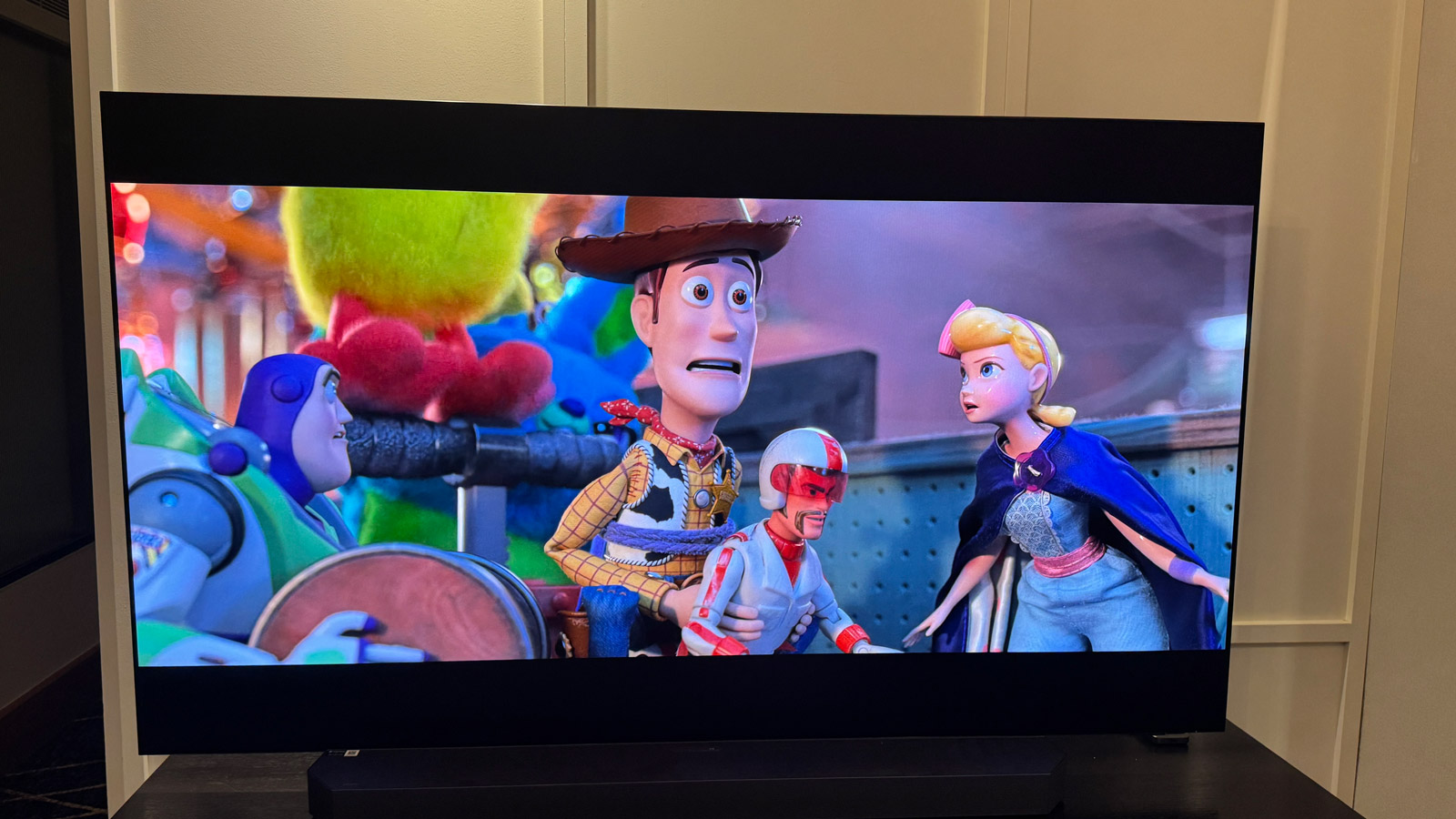
Samsung had set up a viewing experience of both TVs for the media in a hotel room in Sydney where I’m based. The weather wasn’t the usual bright sunshine that one would normally associate with Australia, but there was still some daylight to test the screen’s anti-reflection capabilities, along with bright overheard lights throughout the room.
As I expected, the Glare Free technology on the Samsung S95F worked flawlessly, making the entire screen viewable no matter how bright the room was. It really is an impressive feat that makes it a superb screen for brightly lit homes (including those in Australia, because we do have more sunny days than overcast ones, honestly).
However, I personally think the anti-glare layer does still have some impact on the overall picture quality. I admit that the second-generation panel is an improvement over the S95D – a sentiment shared by my colleague Al Griffin, who’s said that black levels are definitely elevated compared to last year’s model – but, for me, the image looks a little flat in comparison to OLED TVs from other brands.
Head-to-head
I have the LG G4 OLED TV at home, for example, which I use daily. It too has an anti-reflective coating of sorts, but I’m not going to lie and say it isn’t susceptible to reflections from overhead lights, ambient lighting or from the sun pouring in through my windows.
Having said that, I’ve rarely had a major issue with reflections and I’m still able to watch content with little interference.
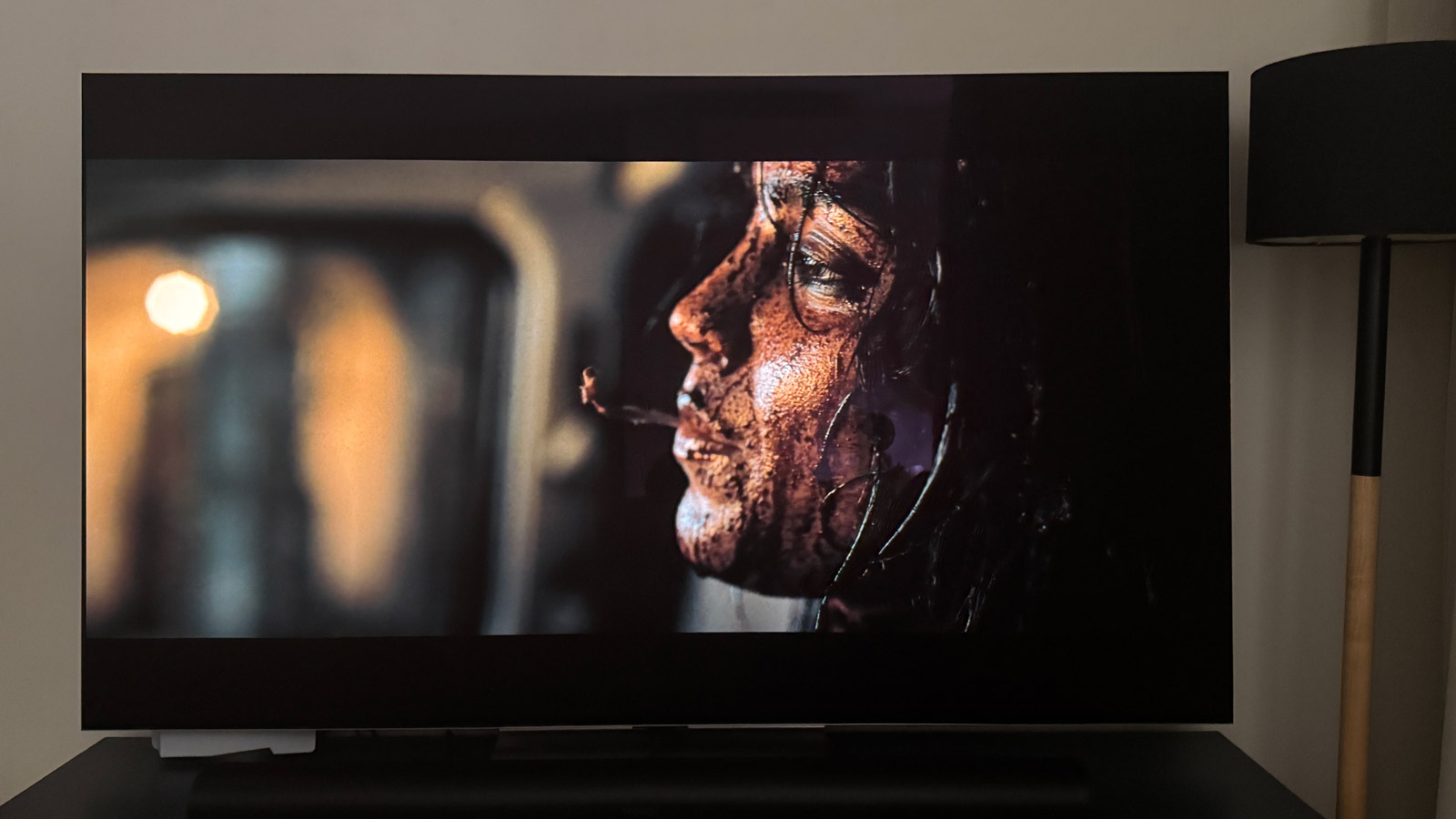
I’m also OK with the reflections it does suffer from because the image quality makes up for it in my opinion. Following my short time with the Samsung S95F, I watched the same movies on the LG G4 when I got home, which included Abigail for its dark scenes and shadow detail.
At the end of Abigail when the lead character Joey leaves the house at night and gets into her van, a large tree can be seen in the background. When comparing this scene on both the Samsung S95F and LG G4, it looked more grey on the Samsung screen than on the LG. Plus, when Joey gets into the van and turns a light on, revealing dark blood on her face, I thought the scene had greater depth on the LG TV.
I can't say the same for more colorful scenes, however. I watched Toy Story 3 on both screens and found much less to separate the two. Both were vibrant and punchy and an enjoyable watch overall. It's just the darker scenes that I find don't have quite the impact on Samsung's TV.
In other words, I find the picture of the LG to be more cinematic than the Samsung. Don't get me wrong, though: I’m not for one moment saying the S95F is a bad TV, because it absolutely isn’t – it just doesn’t suit my personal preferences.
Waiting for the competition
All this brings me to the headline of this feature: TVs I'm more excited for that have been released, or will be released, this year. First up, perhaps unsurprisingly, is the replacement to my current TV – the LG G5.
This year LG has introduced a new ‘four-stack’ OLED panel (which, as it happens, is the same screen used in the 83-inch version of the Samsung S95F) that promises higher brightness and improved color reproduction.
I’ve already had a brief introduction to the G5, viewing it at LG’s offices in Sydney side by side with the G4, and my colleague Al has recently published our LG G5 review, giving it a glowing five-star rating.

I can't argue with this score, as based on the content that LG was showing on the two screens, there were noticeable differences in color and detail.
One video was of some models walking down a runway in dresses of various colors and one that stood out in particular to me was a red dress. The difference in the shade of red on both screens was clear as day, with the LG G5 looking punchier, yet more natural.
The G5 also revealed more creases in the middle of the dress compared to the G4, indicating that it should also be capable of picking out greater detail in other content.
My only concern with the G5 is the way it handles Dolby Vision, something my colleagues at What Hi-Fi? mention in their review. The vast majority of content I watch at home is mastered in Dolby Vision, so naturally I’m now worried when I get to see it properly myself. What Hi-Fi? has said LG is aware of the issue and a fix is on the way.
I, of course, will have to reserve full judgement until I can watch content I’m familiar with on the G5. Still, it’s without a doubt the TV I’m most excited for this year.
But wait, there’s more…
Actually, there's still some doubt. The LG G5 was the most exciting launch for me this year… until Sony announced the Bravia 8 II QD-OLED TV – expected to begin shipping within the next couple of months.
When I published my Sony Bravia 8 review, I was impressed by its beautiful, natural-looking images and brightness levels, considering it was a ‘standard’ WOLED panel with no additional brightness-boosting technology.
That’s all set to change in the Bravia 8 II, which will be sold as a step-up model over the Bravia 8, rather than a full replacement. In fact, Sony has said the new model is a replacement for the A95L that’s been on sale since 2023.
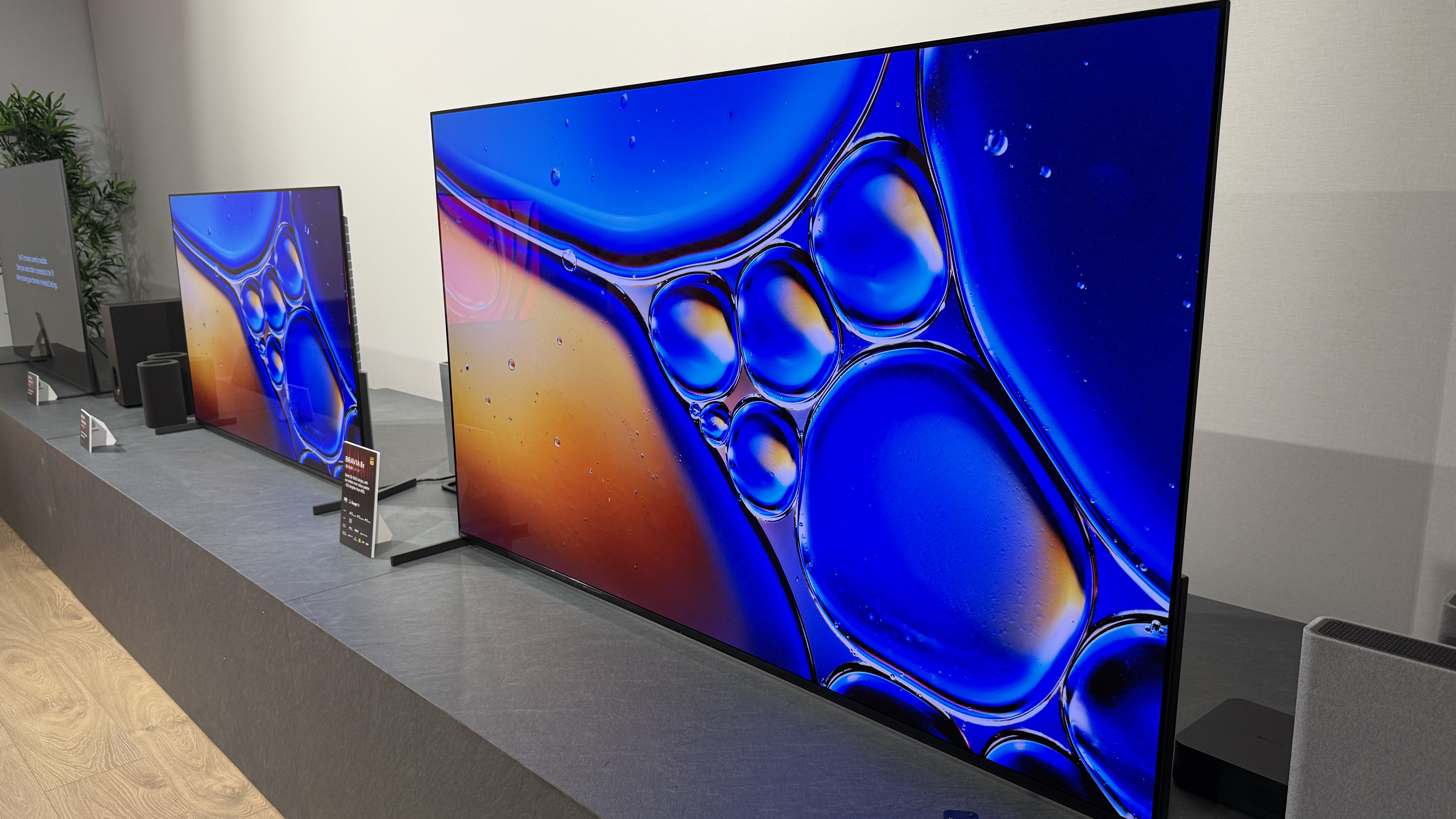
TechRadar's entertainment-channel Managing Editor, Matt Bolton, has already seen the Bravia 8 II in action and noticed how it’s able to unearth subtle details in content and produce colors that appear more saturated. He also reaffirmed that, despite getting a brightness boost thanks to the addition of quantum dot (QD) technology, it’s the company’s latest processor and how it’s used that will likely have the greatest impact.
I have also now seen the Bravia 8 II myself during a media briefing at Sony’s offices in Sydney, where it was placed side-by-side with the Bravia 8. Indeed, there was a clear difference in HDR performance, with particularly bright parts of an image – a lit-up sign, for example – being noticeably brighter on the new model.
It’s these smaller details that can actually have the greatest impact on the content you watch, making Sony’s new screen one to consider.
2025 is an exciting year for TVs. Samsung and LG continue with their innovation and now Sony is throwing its hat into the ring to compete in the premium OLED space. If you’re loyal to a particular brand, then I have no doubt you’ll continue to be impressed, but if you’re planning to invest in a new screen this year, then it’s clear you won't be short of talented options.
You might also like
- I love LG’s new Magic Remote design for its OLED TVs – too bad only certain regions are getting it
- Samsung, Sony and LG OLED TVs for 2025 now have Australian pricing, and one brand is already offering huge discounts
- As a home theatre fanatic, I'm thrilled that Kaleidescape's cult movie players are finally coming to Australia


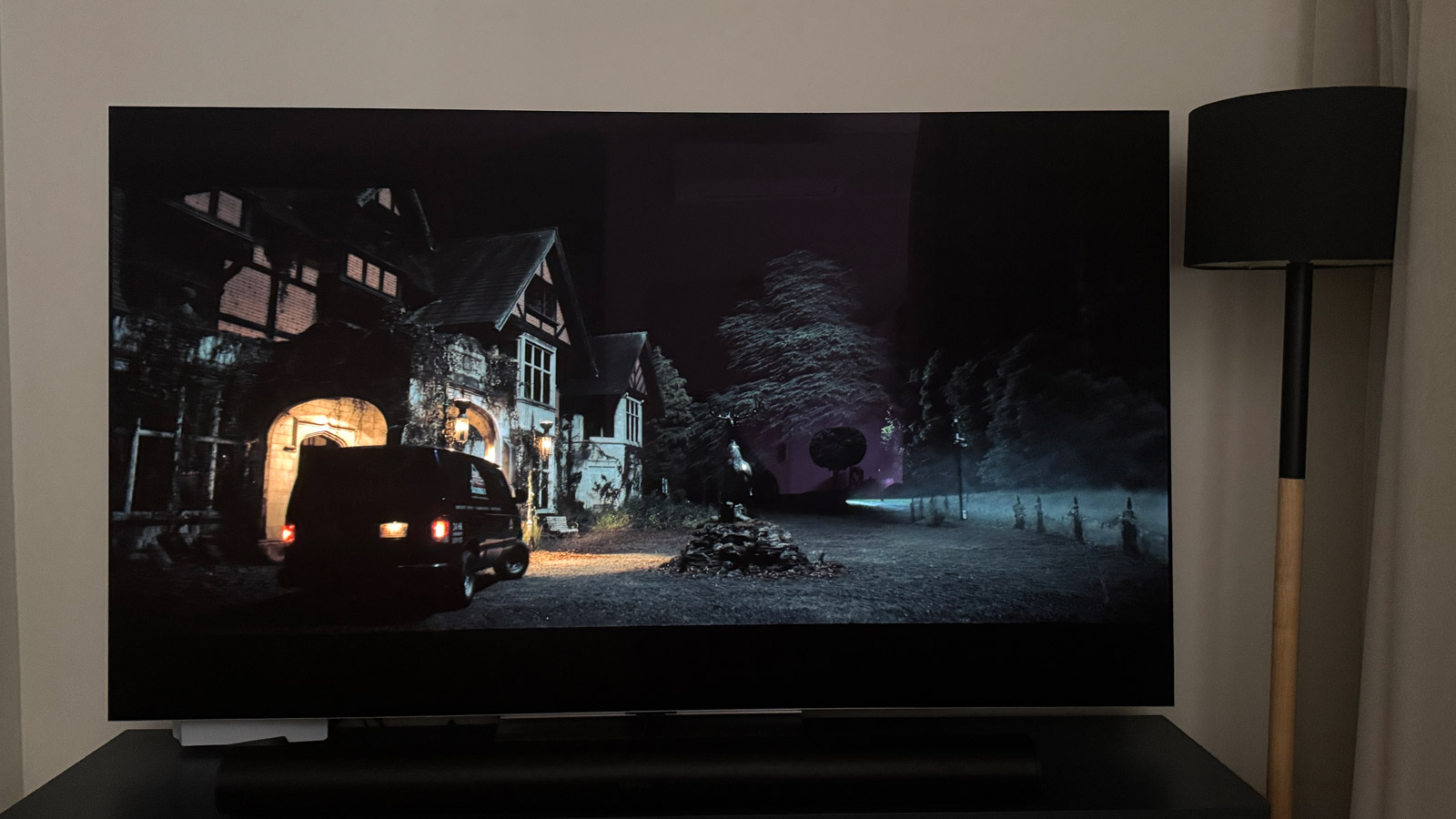
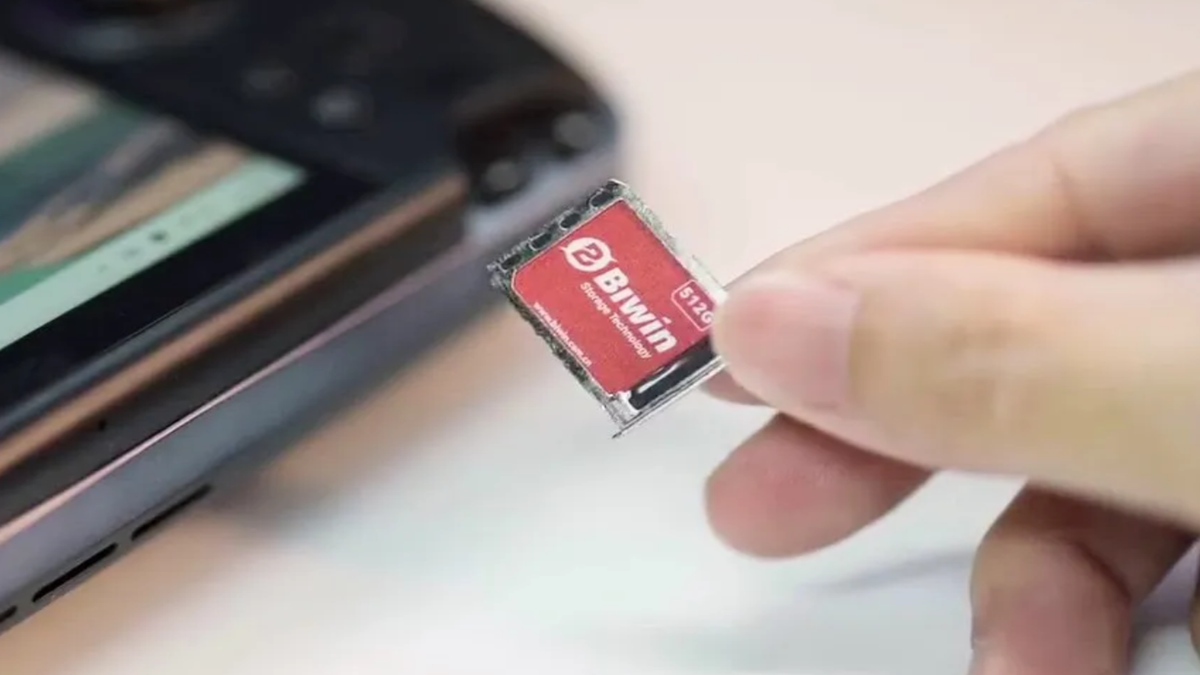






 English (US) ·
English (US) ·